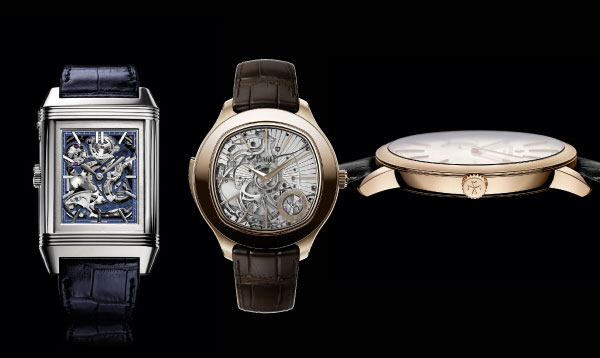
Strength and volume
These breakthroughs are based on two principles : strength and volume. The first powers the hammers striking the metal gongs that are coiled around the movement. It is the actual impact that creates the sound. More strength would mean greater intensity, but there is not enough space to enlarge the hammers or give them more momentum. That is why Jaeger-LeCoultre invented a system inspired by catapults in order to chime more loudly. It is featured in the Reverso Répétition Minutes à Rideau. The second sphere of research concerns the volume of the case. According to Christophe Claret, who has invented and produced a wide variety of striking movements, the case is the really critical issue. The resonance chamber is all-important, as Stradivarius would confirm. Harry Winston has chosen to allow a good deal of space within its Midnight Repeater watch, thus providing plenty of room for the propagation of the sound waves. It is however also essential that the case and movement be properly joined. Once the gong has produced the vibration, it must be transmitted outside the case so as to reach the ear. The most effective solutions in this field are not necessarily the most recent. For example, in Vacheron Constantin’s Patrimony Contemporary Ultra-Thin Calibre 1731, the part to which the gongs are fixed is simply screwed into the case, and it is via this tiny bridge that the acoustic wave travels. But this model is first and foremost distinguished by its slenderness, as the ultra-thin craze pervading cutting-edge watchmaking has also spread to the domain of minute repeaters.
Finesse and intuition
In 2012, Piaget had already launched its 9.4 mm thin Emperador Coussin Minute Repeater and Vacheron Constantin is now down to 8.1 mm. Reducing the volume of a minute repeater watch might seem to be counter-intuitive, and yet Vacheron Constantin had already demonstrated in its Calibre 2755 a capacity to create a chime that is perfectly balanced in terms of power, duration and acoustic quality – and to achieve this by traditional means. Such is also the approach adopted by A. Lange & Söhne for its Grand Complication model. Among its many functions, this monumental creation has a Grand Strike mechanism. In addition to chiming the hour on demand, it also does so automatically on each quarter-hour. This complication remains the peak of horological complexity and is unlikely to be toppled from this perch any time soon.






